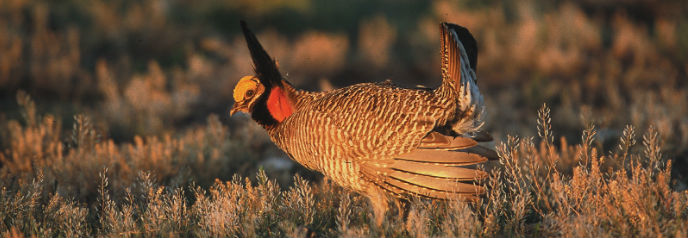Wind farms aren’t green if the prairie is destroyed
By Mike Fuhr
From the Tulsa World
Many have been following the ongoing conflict in OsageCounty regarding industrial wind energy development — objections, denied permits, lawsuits, delays. Wildlife conservation is one of the many issues at hand there. Simply put, with regard to conservation, it comes down to the real estate mantra: location, location, location.
Globally, temperate grasslands have experienced drastic declines and they continue to disappear. The prairies in the central U.S. are the quintessential American landscape but have faced the same pressures as other grasslands. The tallgrass prairies of the eastern Great Plains have been especially hard hit. What was once more than 140 million acres of tallgrass prairie has been seriously degraded by 150 years of conversion to other uses. Less than 4 percent of this landscape remains.
The Osage Hills and neighboring Flint Hills of Kansas harbor the largest unfragmented block of tallgrass prairie anywhere in the world. The unfragmented setting and biological richness of the Osage and Flint Hills make them a high priority for conservation. In fact, it is our last chance to work collaboratively with landowners to conserve the tallgrass prairie at a large enough scale that will conserve the many interlocking biological pieces that make a prairie a prairie.
The Nature Conservancy is concerned that if inappropriately located, industrial wind farms pose known threats to natural habitats and certain wildlife populations, which might in turn have significant negative consequences for project developers, financiers, power purchasers and citizens. We do not want to exacerbate one problem as we try to solve another.
The Osage Hills are the very same landform with the same rich biological diversity features found in the Flint Hills of Kansas, which is a landscape that wind developers and Kansas Gov. Sam Brownback have agreed to avoid disturbing with wind energy development. Industrial wind developments planned for the Osage Hills that are located in the remaining native tallgrass prairie landscape there, from a conservation science perspective, are in a very poor location for the siting of any major infrastructure, including industrial wind power.
For a decade, The Nature Conservancy has urged wind developers to find habitat-friendly locations for their projects. We have supported this by working with partners to develop science-based computer models for Oklahoma that identified those locations that have high impacts to habitats and those with little or no impact to habitats, and making those models available to wind energy developers.
It is inappropriate for the TradeWind projects, and any others planned for OsageCounty, to be labeled as “green” when they negatively impact the largest patch of unplowed tallgrass prairie left in North America. Together, the projects encompass an estimated 160 turbines, each standing 400-plus feet tall, across more than 17,000 acres west and northwest of Pawhuska.
It is critical that wind developers consider wildlife habitat and other potential constraints very early in their planning and collaborate with relevant entities to resolve any issues then. Let’s be smart about development that helps Oklahoma and preserve what’s left of our beautiful prairie land.
Mike Fuhr is State Director of the Oklahoma Chapter of The Nature Conservancy





